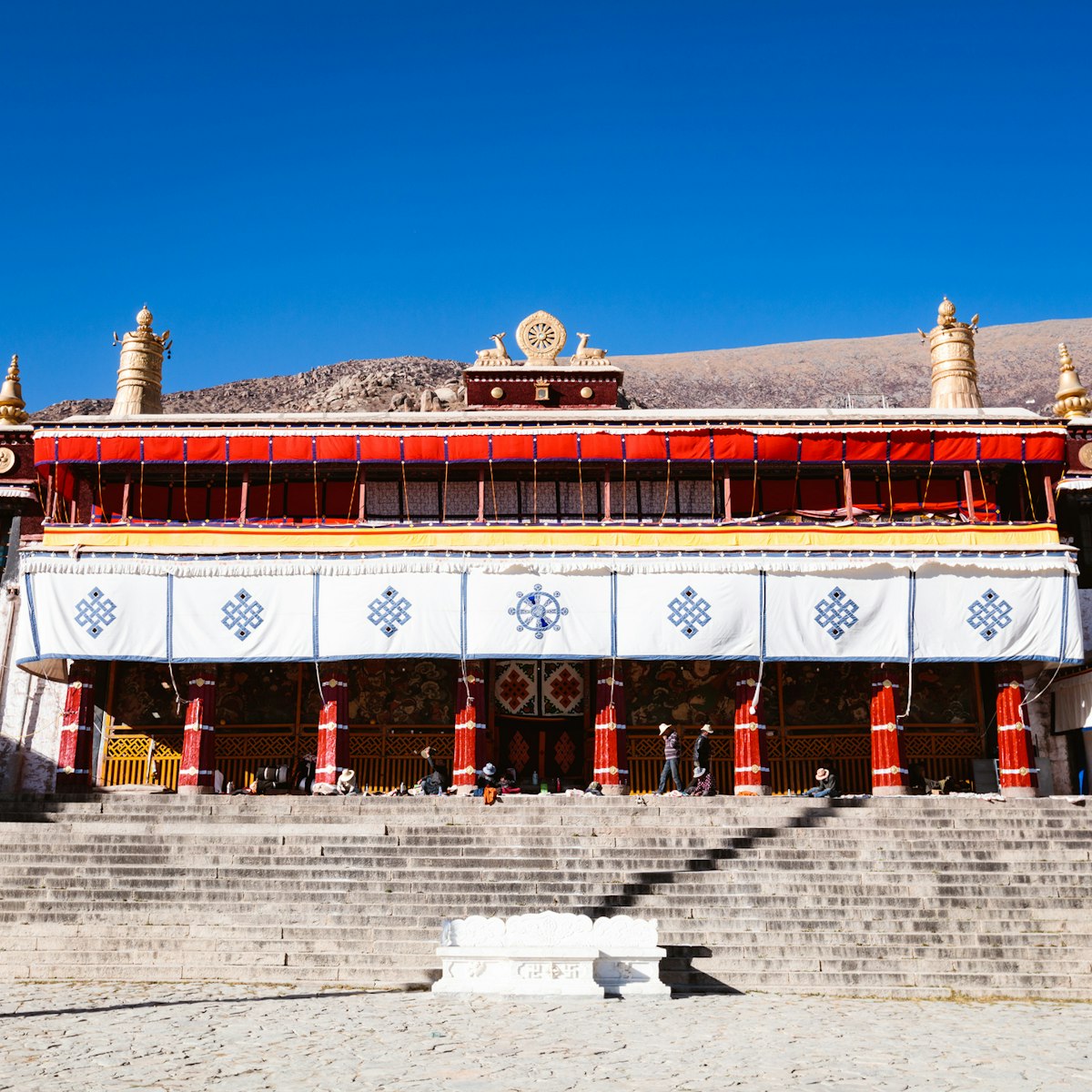In 1530 the second Dalai Lama established the Ganden Podrang, the palace that was home to the subsequent Dalai Lamas until the fifth built the Potala. It was from here that the early Dalai Lamas exercised their political as well as religious control over central Tibet, and the second, third and fourth Dalai Lamas are all entombed here.
To reach the palace from the monastery's car park, pass the juniper stalls and follow the kora clockwise around the outside of the monastery until you reach the steps.
The first hall on the left is the Sanga Tratsang, a renovated chapel housing statues of the protectors Namtöse (Vaishravana), Nagpo Chenpo (Mahakala), Dorje Jigje (Vajra Bhairavo), bull-headed Chögyel (Dharmaraja), Palden Lhamo (Shri Devi; on a horse) and Dorje Drakden (the Nechung oracle), all arranged around a central statue of the fifth Dalai Lama, with the Wheel of Law characteristically in his hand.
Head up the stairs and then across the main courtyard, where performances of cham (a ritual dance) are traditionally performed during the Shötun festival. The upper floor of the main building has three chapels that make up the apartments of the early Dalai Lamas. The second of the three chapels is the Nyiwo Tsomchen, the Sunlight Audience Room, with wonderfully detailed murals depicting the life of Atisha and the throne of the fifth Dalai Lama, next to a thousand-armed statue of Chenresig. The third is a simple living room.
From here descend and cross over to an assembly hall whose entrance was defaced by a Cultural Revolution–era political slogan as recently as 2015. Signs lead past a refreshment stand and an easily missed corner rock shrine to Drölma next to the exit to the north, said to have arisen naturally.




